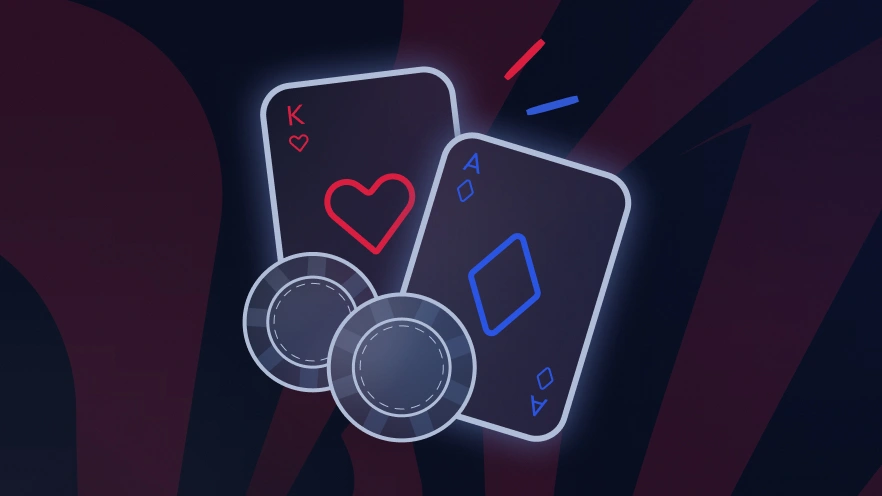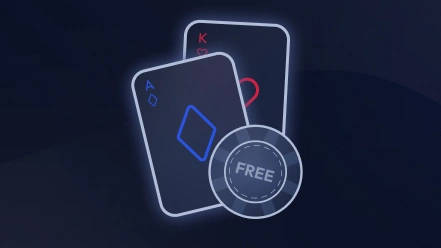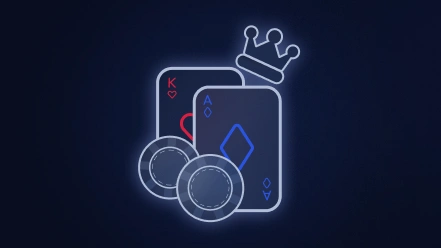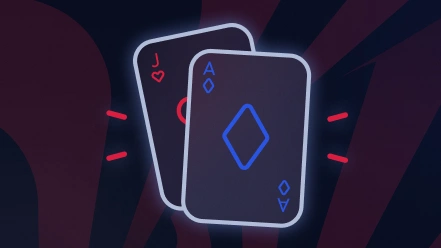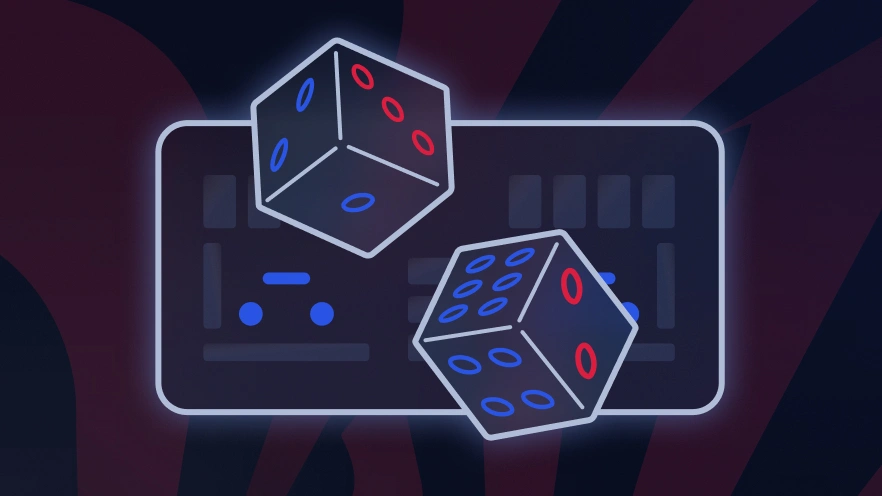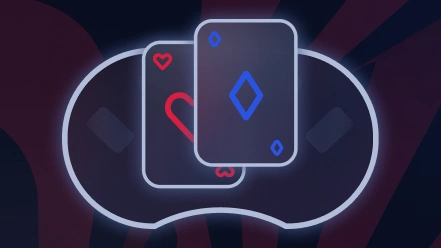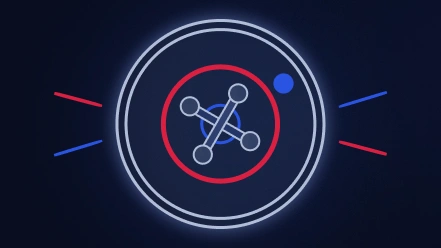Blackjack Odds & House Edge Explained
Even basic strategy can make a difference to blackjack odds. Join us on a deep dive into blackjack probability, house edge, and how to reduce it. We’ll help you make smarter decisions and potentially win more money.
 9 mins read read
9 mins read read
Player’s Odds Table
Reducing the online blackjack house edge is as simple as learning basic strategy. More advanced techniques like card counting can potentially improve the return-to-player percentage (RTP) further.
In turn, however, the casino can reduce a player’s odds. Land-based and live casinos can do this by including extra decks in the shoe, lowering payouts, and adding restrictive blackjack rules like no doubling after splitting.
Understanding probability and how it affects blackjack odds is vital to identifying the advantage you may have in a game. It can maximize payouts and reduce the risk of losing money on bad hands.
The table below gives a basic example of how you can assess the probability attached to choosing to hit after you’ve been dealt your first two cards.
Player’s Bust Probability
Dealer’s Odds Table
The dealer is always more likely to win a game of blackjack than you. That’s thanks to the advantage of going second and making decisions based on your position.
However, dealer odds can change depending on blackjack house rules. For example, a dealer who must stand on soft 17 is less likely to win than a dealer who has to hit on soft 17.
The table below shows the likelihood of a dealer busting, and how that can change depending on the house rules.
Dealer’s Bust Probability
Odds of Winning Blackjack
The odds of winning at blackjack can be as high as 42.22%. However, this does not mean the house wins 57.78% of the time. That’s because there is a third possible result - a push. An average of 8.48% of blackjack games end in a push, leaving the probability of a loss at 49.10%.
These odds can fluctuate, considerably in some cases. It depends on the blackjack variant, the rules for the player and the dealer, and your playing style. Players with no strategy, for example, will see their odds of winning blackjack fall dramatically.
It’s best to have basic blackjack strategy in place to give you better odds and a sense of when to hit and when to stand. For an immediate helping hand, check out our blackjack tips. They will assist you in making the right choices and improve your odds of winning.
Use Blackjack Odds to Win Tricky Hands
Some blackjack hands are particularly tricky to win as the odds between dealer and player are very close. The dealer having an upcard is a very helpful tool, but can create tough situations.
Here, we’ll break down the toughest combinations of your hand and the dealer’s upcard. We’ll explain how knowing the blackjack odds for these hands can still help increase your chances of victory:
Hard 16
A hard 16 is a hand which splits blackjack players, with many saying you should stand regardless. When using basic strategy, you should hit if the dealer is showing 7 or 8.
However. you should consider surrendering if a 9 or a 10 is showing. The chance of busting is high, but it’s a lower probability than the dealer ending with 17 or more.
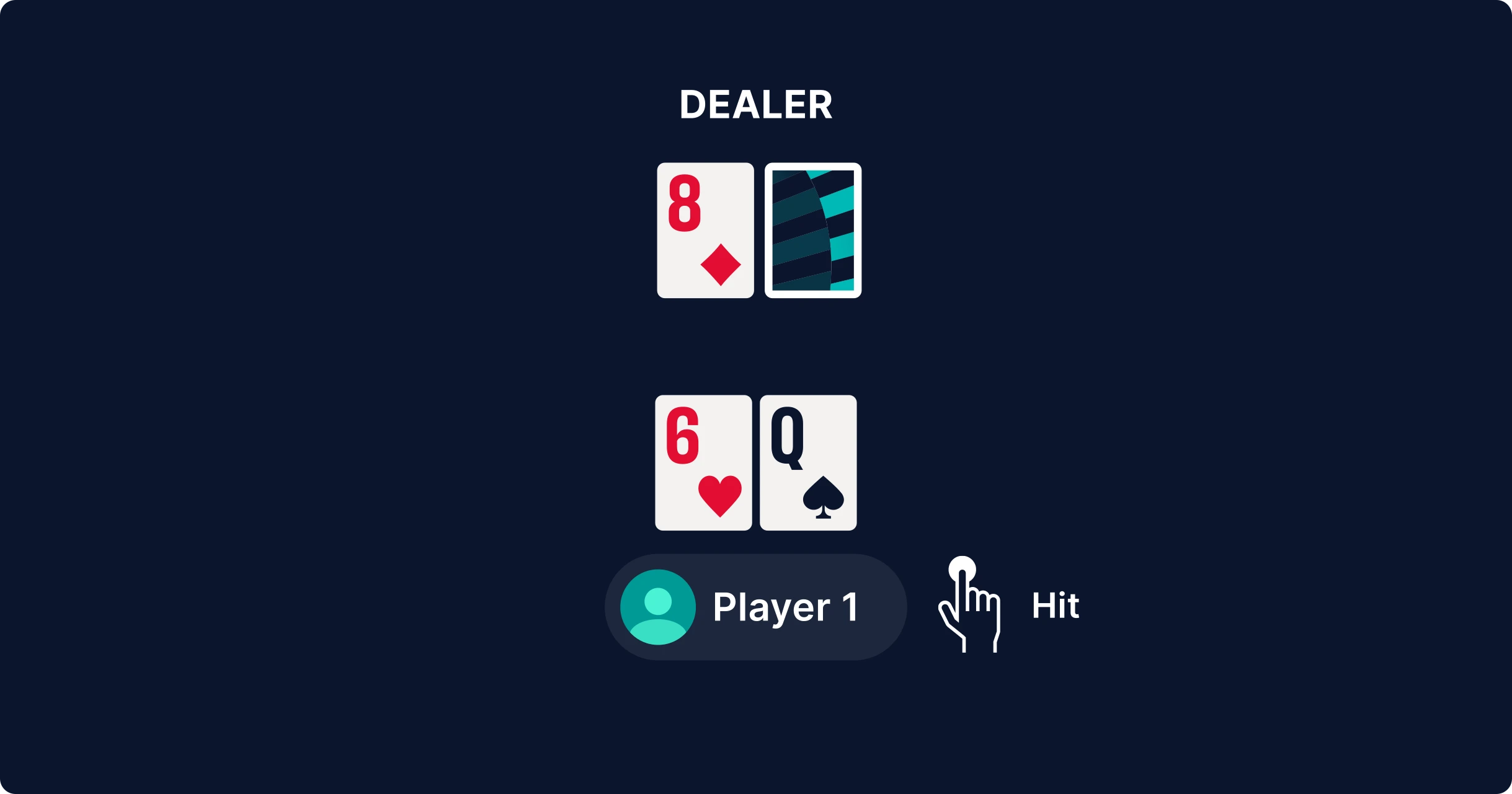
MR BLACKJACK SAYS...
You can stay and pray or you can play
Always play the math. Hit if the dealer has a 7 or more.

Mathieu Blake
Professional Blackjack Player
12 vs Dealer 4
This is one of the closest hands in blackjack when it comes to odds. And, honestly, it’s not a good position to be in.
When the dealer’s upcard is a 4, there’s a 40% chance they will bust. That means you’re going to lose the hand 60% of the time if you stand.
If you choose to hit, your odds are slightly better, with a 58% chance of losing and a 2% chance of a push. Despite the slight advantage, our advice here is to stand and wait for the dealer to bust out.
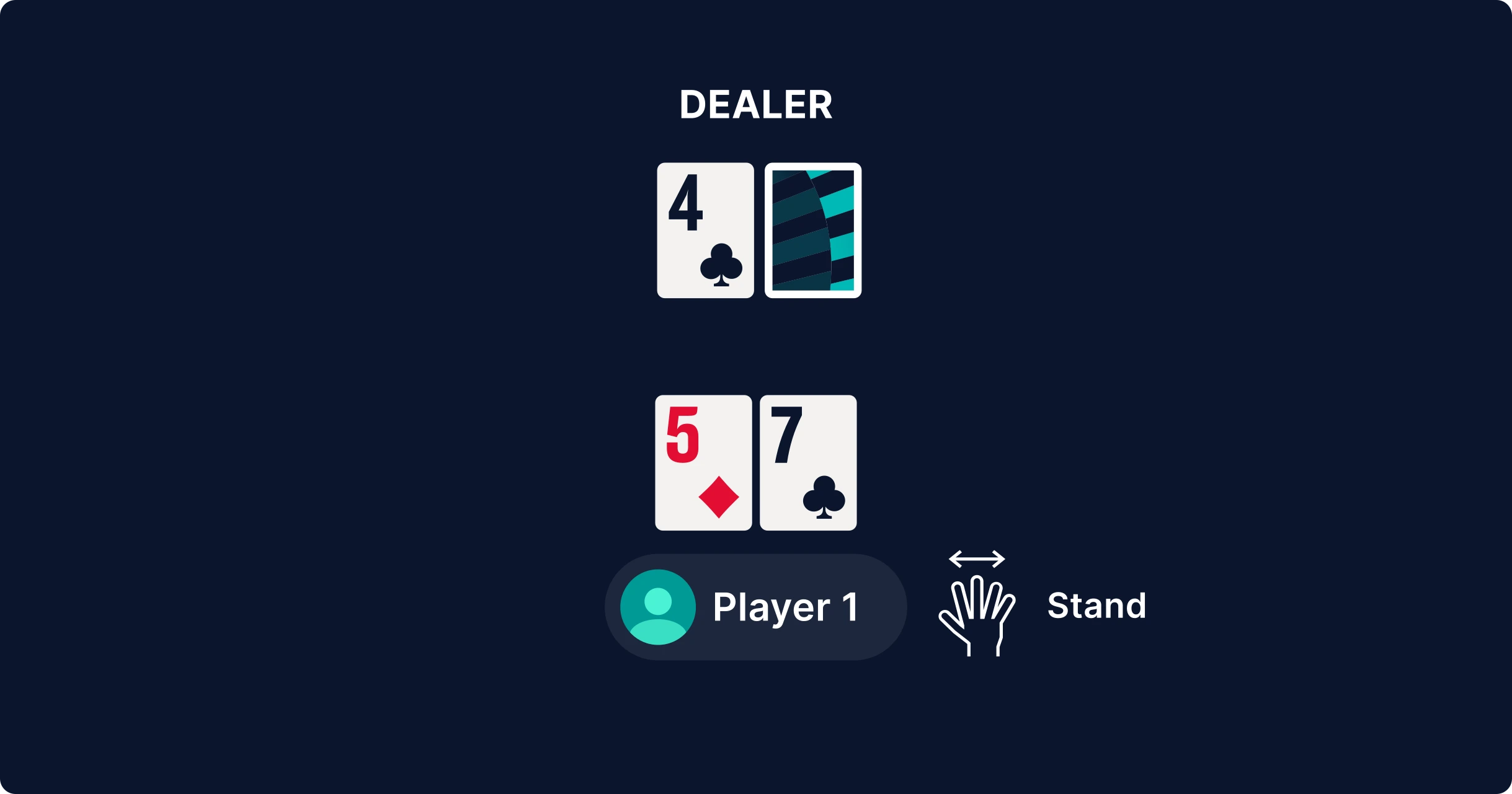
MR BLACKJACK SAYS...
12 is a bad hand regardless
The only good thing about this situation is the dealer 4. Don't make a bad situation worse by hitting.

Mathieu Blake
Professional Blackjack Player
15 vs Dealer 10
This is one of the least favorable hands in all of blackjack. Whatever you do, the dealer has a much higher chance of winning.
Hitting will give you a 22% chance of victory. Choosing to stand, meanwhile, will give you the slightest of edges - a 23% chance of winning. You might as well take a risk and hit.
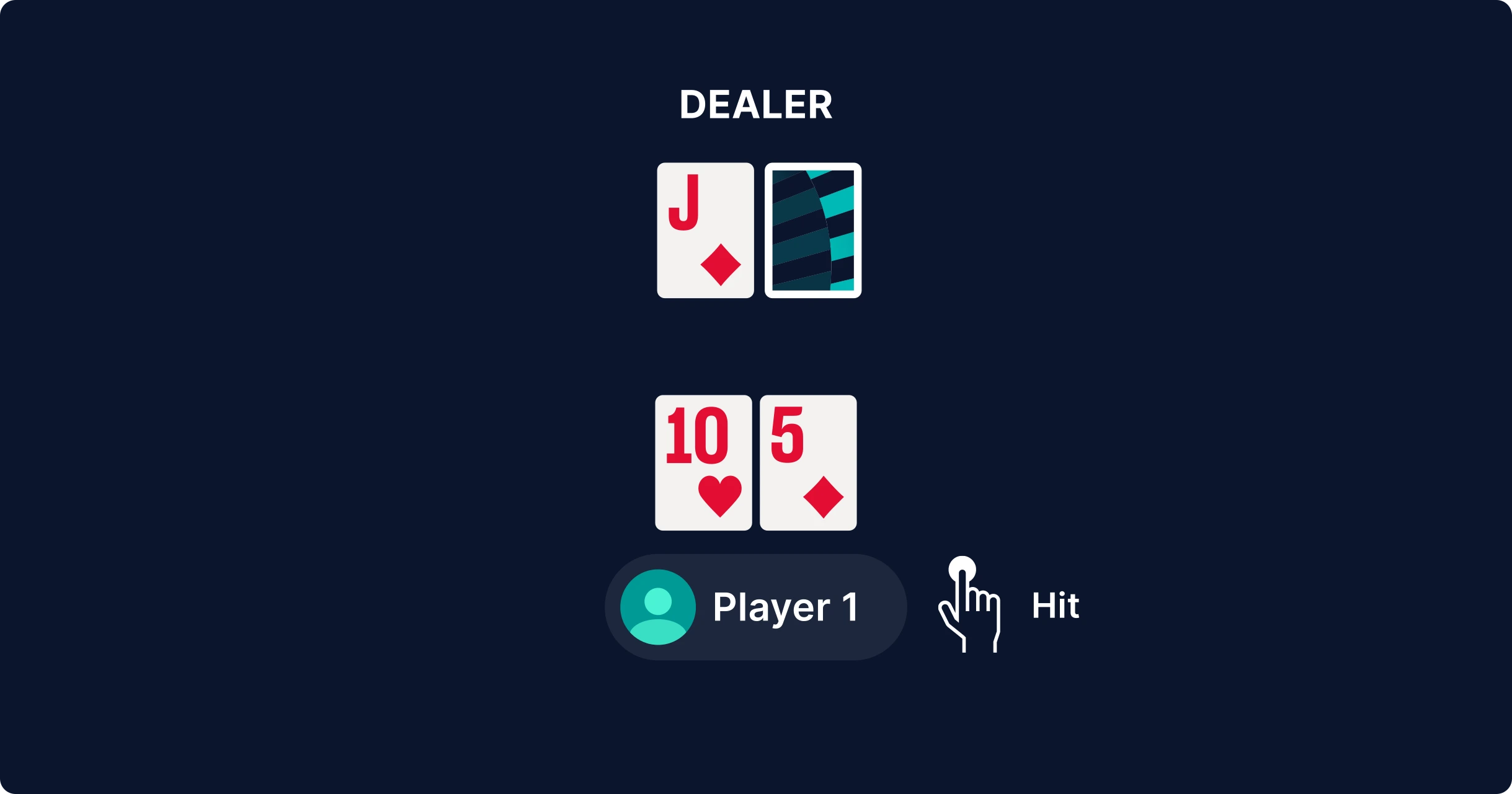
MR BLACKJACK SAYS...
You always have to think the dealer has a 10 behind their upcard.
Your 15 is already a loser. Give yourself a chance to win and hit it.

Mathieu Blake
Professional Blackjack Player
Low Pairs
Let’s start with the simple ones here. If you’ve landed a pair of 4s, always split on dealer 5 or 6. If you have a pair of 5s, you should never split them. Conversely, a pair of aces should always be split.
The more complex decisions come when you land pairs of 2s, 3s, or 6s. In these cases, you should split if the dealer is showing a card between 2 and 6. You should also split 2s and 3s on a dealer 7. In any other situation, you should not split these cards.
If you don’t split, 2s, 3s and 4s should be hit, regardless of the dealer’s hand. Similarly, a pair of 5s also has the same response regardless of the dealer’s hand.
However, here you should double as the odds are in your favor for landing a 20 when the dealer has 2-9 up. If you’re holding a pair of 6s and the dealer has more than 7 in their hand, you’re going to want to hit. But, if the dealer shows 6 or less, you should split and hope the dealer busts.
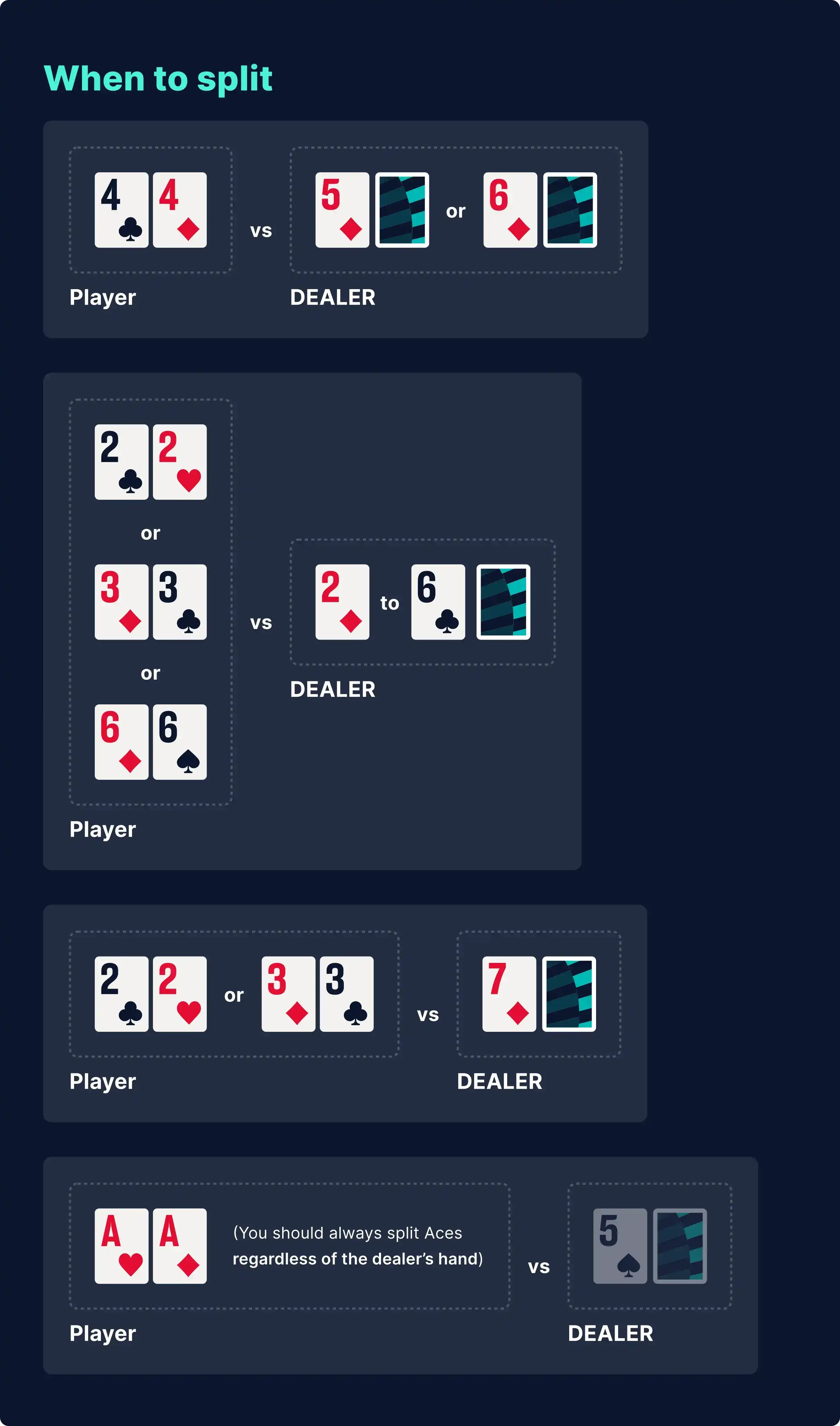
MR BLACKJACK SAYS...
NeverSplit10s
Refer to your strategy chart for the optimal splitting strategy.

Mathieu Blake
Professional Blackjack Player
12 vs Dealer 3
If you’re sitting on a 12 and the dealer is showing a 3, you should hit, but only once. Basic strategy would call for you to stand here for any additional card added to your hand. There is a 5% chance of a push here, which means you won’t lose anything, but won’t win either.
There’s less than a percentage point in it but hitting here makes you slightly more likely to win. If you’ve made 12 with two aces, the logic is different as you should always split aces in blackjack.
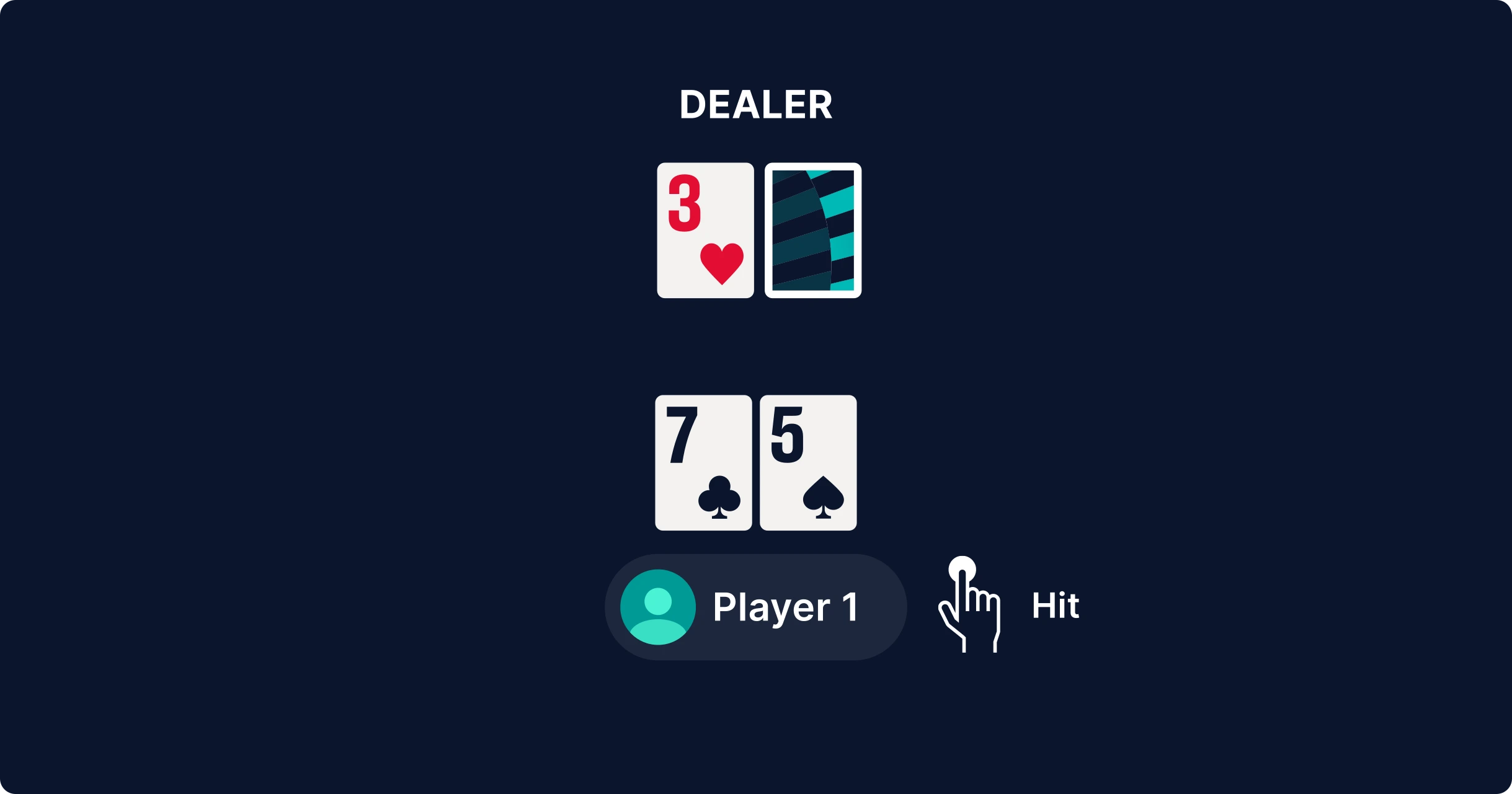
MR BLACKJACK SAYS...
In the case of a 12 on a dealer 3 there are more cards in the deck that help you rather than make you bust
You can hit 9 cards vs 4 that make you bust. 12 on a dealer 2 or 3 is always a hit.

Mathieu Blake
Professional Blackjack Player
Blackjack Payout
Landing a blackjack with your first two cards is the dream scenario. However, how much you are rewarded for this sought-after eventuality depends on the casino.
While most of the best online casinos will offer a 3:2 payout here, for a 0.5% house edge, that isn’t always the case. Some sites will payout 6:5 or, in some cases, even-money for a blackjack payout.
This can have a big impact on the house edge. The table below shows the differences between potential payouts and their effect on blackjack probability.
Payout vs House Edge
Blackjack Probability Explained
Blackjack is a dynamic game with a probability that constantly changes. It depends on what bets are made, the cards you and the dealer have, and what cards remain in the deck(s).
As a result, it is advisable to adopt a basic strategy and stick to it. We suggest using our free online blackjack games to practice. These strategies are based on blackjack probability over a million hypothetical hands.
Master blackjack strategy
Maximize your chances of success with our online blackjack strategy guide. Then take your game to the next level by learning how to count cards in blackjack.
In land-based blackjack, there is also the option of card counting. When done right, this uses the cards remaining in the shoe to identify when the odds will be in your favour.
Players should never bet statically because the odds of winning blackjack hands can change depending on the deck, or the hands themselves. Instead, learn to adapt to specific situations to ensure the best probability of winning blackjack hands.
What is the Probability of Getting Blackjack?
When playing blackjack with a single deck, the odds of being dealt blackjack stand at 32/663, or 4.83%. That is around 1 in every 20 hands.

However, this can change if the single deck is not reset after every hand. For example, if three hands have been dealt, with no Ace or face cards appearing, the probability will rise depending on the number of cards removed from the deck.
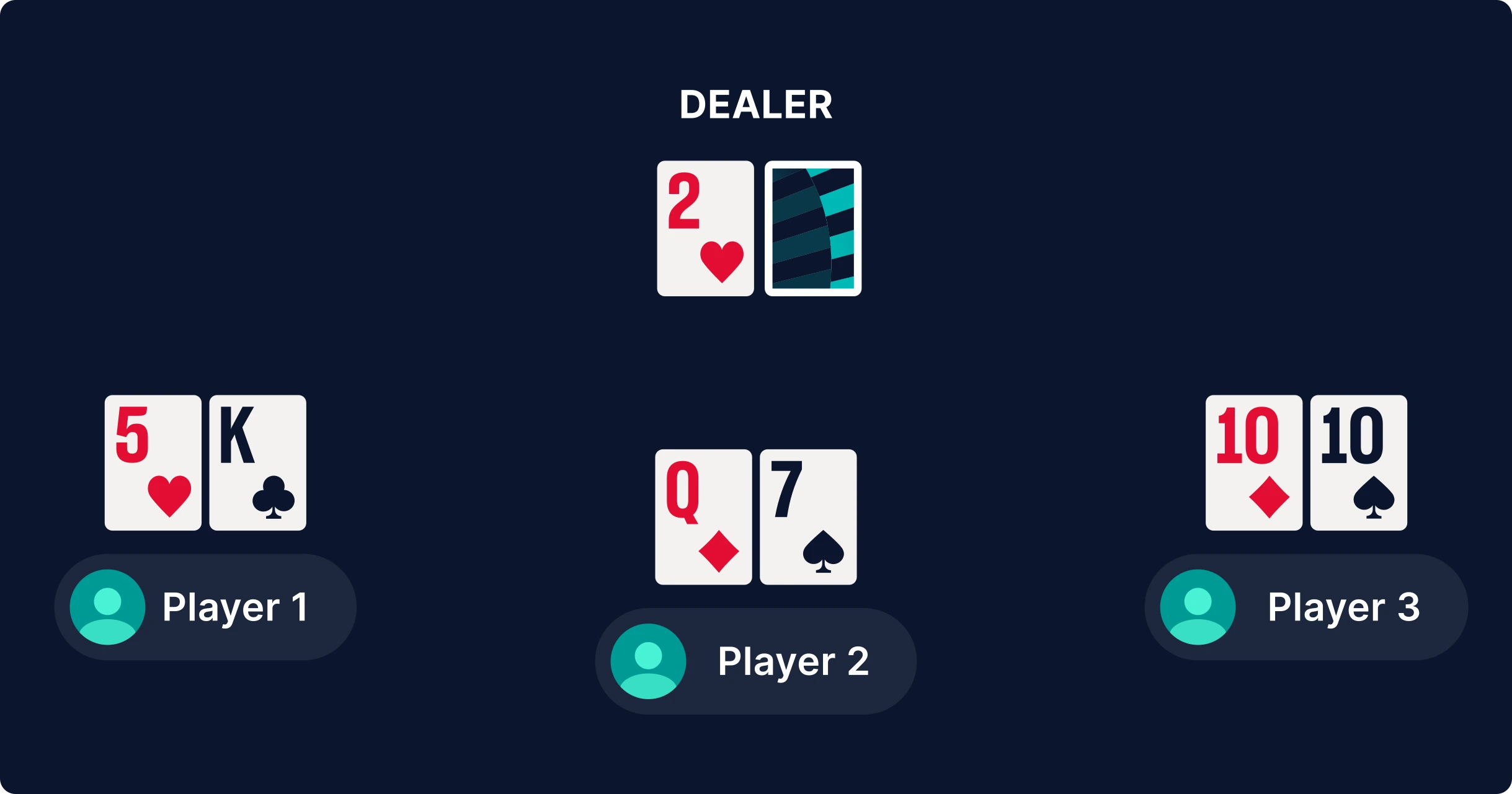
If you’re playing real money blackjack online, the random number generator (RNG) means you are always dealt from a 52-card deck. That means the probability remains at 4.83%.
If you are playing multi-deck blackjack, the probability decreases, but not by as much as you think. With two decks, for example, you’re looking at a 4.78% chance of landing blackjack. Six decks (the go-to for a large shoe at casinos), meanwhile, is only a little less, at 4.75%.
Below is a table showing the blackjack probability of different numbers of decks. You’ll see that even when playing with 100 decks, the round up to 1 in 20 hands average still remains, although there is a mild decrease in your actual chances of blackjack.
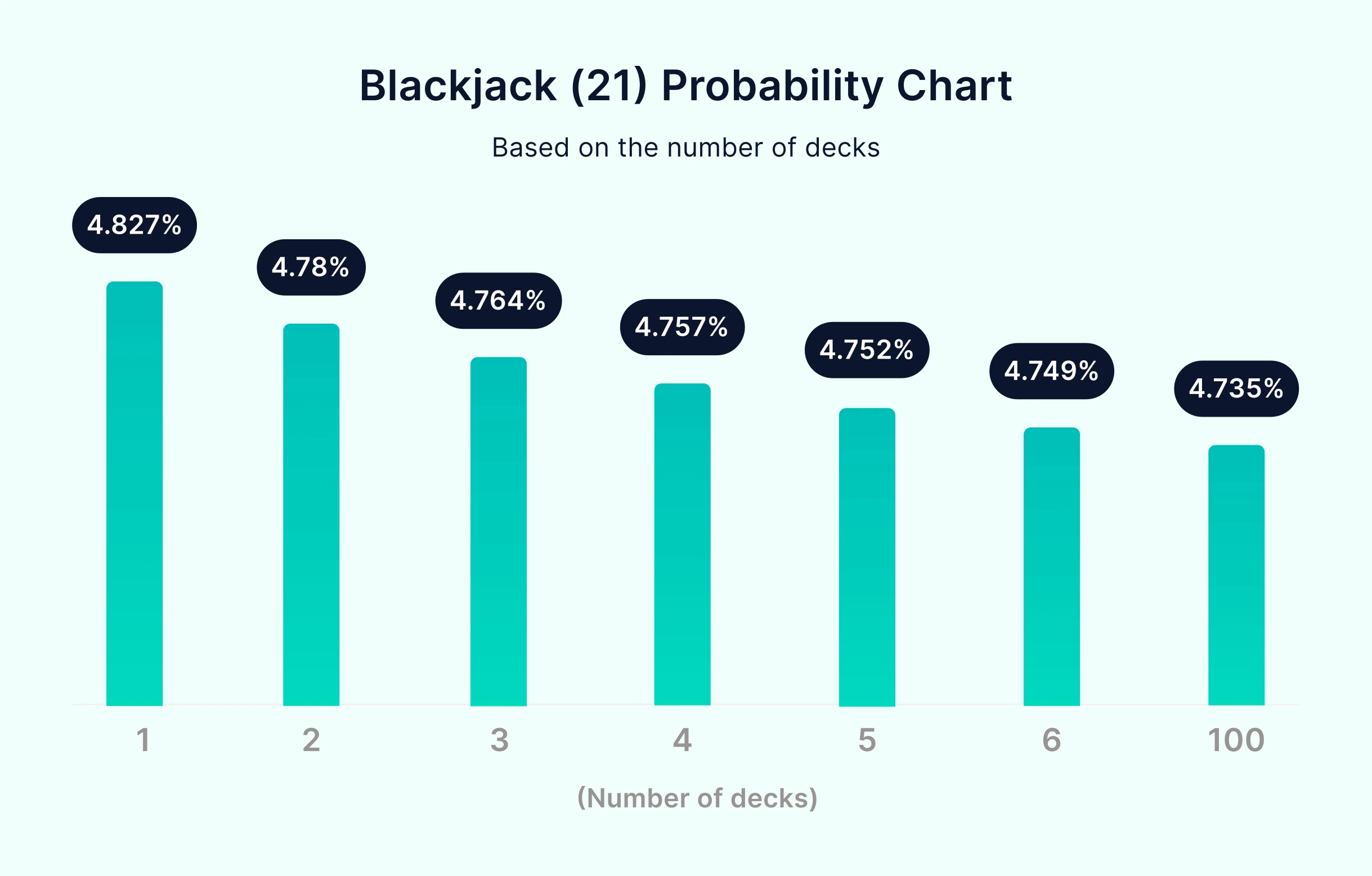
Blackjack House Edge
Blackjack is famous among casino games for having one of the most favourable house edges. However, the right strategies and techniques can reduce blackjack odds and tilt the house advantage further in your favour. Below, we’ll help you understand blackjack probability and how best to play to increase it.
What is the House Edge in Blackjack?
Every casino game has a house edge. It makes the player more likely to lose than win and ensures the casino maintains its profit margins. The house edge is the statistical advantage the casino holds over the player.
In blackjack, the dealer acts last in a hand, and therefore can make decisions based on the player’s actions. If the player busts, the dealer wins the hand without having to take any action.
While blackjack has one of the most player-friendly house edges, there are caveats. Different variants of blackjack may decrease or increase the house advantage compared to traditional games.
Understanding blackjack odds and how they are affected by game type is important in choosing the right variant and blackjack casino for you. Here, we will highlight the most common variants, their rules, and how these can significantly affect the blackjack house edge.
House Edge in Blackjack Variants
What is the Blackjack House Edge Percentage?
While you won’t find a casino game with no house advantage, it's pretty close at 0.5% when playing blackjack with basic strategy. For players using the most advanced blackjack strategy, the odds may be reduced even further, but never to zero.
That’s because there will always be an element of chance in any card game. When played without any strategy, the blackjack house edge can rise to 2% or higher.
How to Reduce the Blackjack House Edge
Implementing strategy can reduce house edge and improve your chances of winning blackjack. Whether you are using a basic or advanced blackjack strategy, knowing what the correct choice is at the right time can help bring a greater number of wins your way.
Simple blackjack strategy involves knowing when to stand and when to hit. You must not let emotions or excitement allow you to deviate from that.
Advanced blackjack strategies like card counting can bring the edge close to zero. However, this is famously frowned upon in land-based casinos, and impossible in RNG online games when a ‘fresh deck’ is used on every hand.
How Do Rule Variations Influence the House Edge?
Blackjack Variants
Blackjack Rule vs House Edge
Within standard and variant games of blackjack, there are many rules which influence the house edge. We’ve listed these below.
- Hit or Stand on Soft 17: The house edge is higher when the dealer has to hit on soft 17 rather than stand on that value. The difference to the house edge is around a 0.2% increase when the dealer hits soft 17.
- Resplitting Rules: If the player can hit hands of split Aces, this reduces the house edge by 0.13%. If Aces can be resplit, then the house edge is lowered by a further 0.03%. The more restrictions a game places on your ability to split, the higher the blackjack house edge is likely to be.
- Natural Blackjack Payouts: The standard payout for winning with blackjack is 3:2. Some blackjack tables pay 6:5 on winning naturals, and sometimes just an even-money payout. A 6:5 payout increases the house advantage by 1.4% and the even-money payout increases it by 2.3%.
- The Number of Decks: The standard number of decks most online casinos use these days is eight. The fewer decks are used, the more advantageous it is for the player. Therefore, rules benefitting the casino will usually be added. Single deck games, in particular, attract disadvantageous blackjack rules. If a casino offers blackjack with a smaller number of decks and fewer disadvantageous rule changes, then the house edge should be significantly lower than at other casinos.
- No Hole Card: Playing blackjack with no dealer cards face up can change basic strategy. That’s because the player has no information on the likelihood of an outright dealer win. The effect is a 0.11% increase in the house edge if all bets are lost to a dealer blackjack, and no increase in house edge if only the original bet is lost to a dealer blackjack. Several variants of blackjack, like Atlantic City Blackjack, let the dealer check for blackjack if they have an Ace or 10 value card.
- Which Card Charlie?: Many blackjack variants allow players to win automatically if they draw a certain number of cards without busting. The addition of this rule is always advantageous to the player, but it is often accompanied by less favorable rules. Some variants will also payout ‘5-card Charlies’ at the higher natural blackjack odds of 3:2.
- Blackjack Switch: Added twists can change the nature of more unusual blackjack games. For example, in Blackjack Switch, players are dealt two cards and may switch their second card. This rule benefits the player, but it is countered by bizarre rules such as dealer push on 22.
Strategy goes a long way to helping cut down the house edge. If you are going to play a specific blackjack variant for any extended length of time, you should find the ideal strategy and memorize it or print out a strategy card for it. Playing in an online casino makes it much easier to refer to a strategy card, though, so consider joining one of our recommended online blackjack casinos.
Check out our blackjack glossary
Don't know a Soft 17 from a Natural? Brush up on your lingo with our glossary of blackjack terms.
Blackjack Return-to-Player Percentage
The return-to-player percentage, or RTP, is essentially the opposite of the house edge. The RTP denotes the expected return to a player across an infinite number of hypothetical hands.
An RTP of 98%, for example, would average a $98 return for every $100 wagered. As with the house edge, though, this should not be considered a guarantee. That’s because the results from any given $100 worth of bets can differ greatly.
The RTP of online blackjack, when played with basic strategy, is 99.5%. The house edge, meanwhile, is 0.5%. For some, the RTP of blackjack can be altered when playing some online blackjack games.
This is because most online blackjack uses an RNG. That means the outcome of every hand is completely random and unpredictable, removing the potential for card counting.
Dealers at land-based casinos deal from a certain number of decks so when a card is used it can’t be used again. RNG blackjack removes this factor.
There are live dealer blackjack games at many online casinos. They are streamed from studios and hosted by real dealers. The RTP may return a little higher when using certain tactics in these games.
If you’re playing RNG online casino options, always seek out those with the best RTP. That’s goes for whether you’re playing online slots, online roulette, online scratch cards, or anything else.
For blackjack, it is usually the most traditional titles that offer the higher RTP percentages. The return-to-player percentage will always be listed on the games, so you can choose the option that offers the best RTP, and therefore the lowest house advantage.
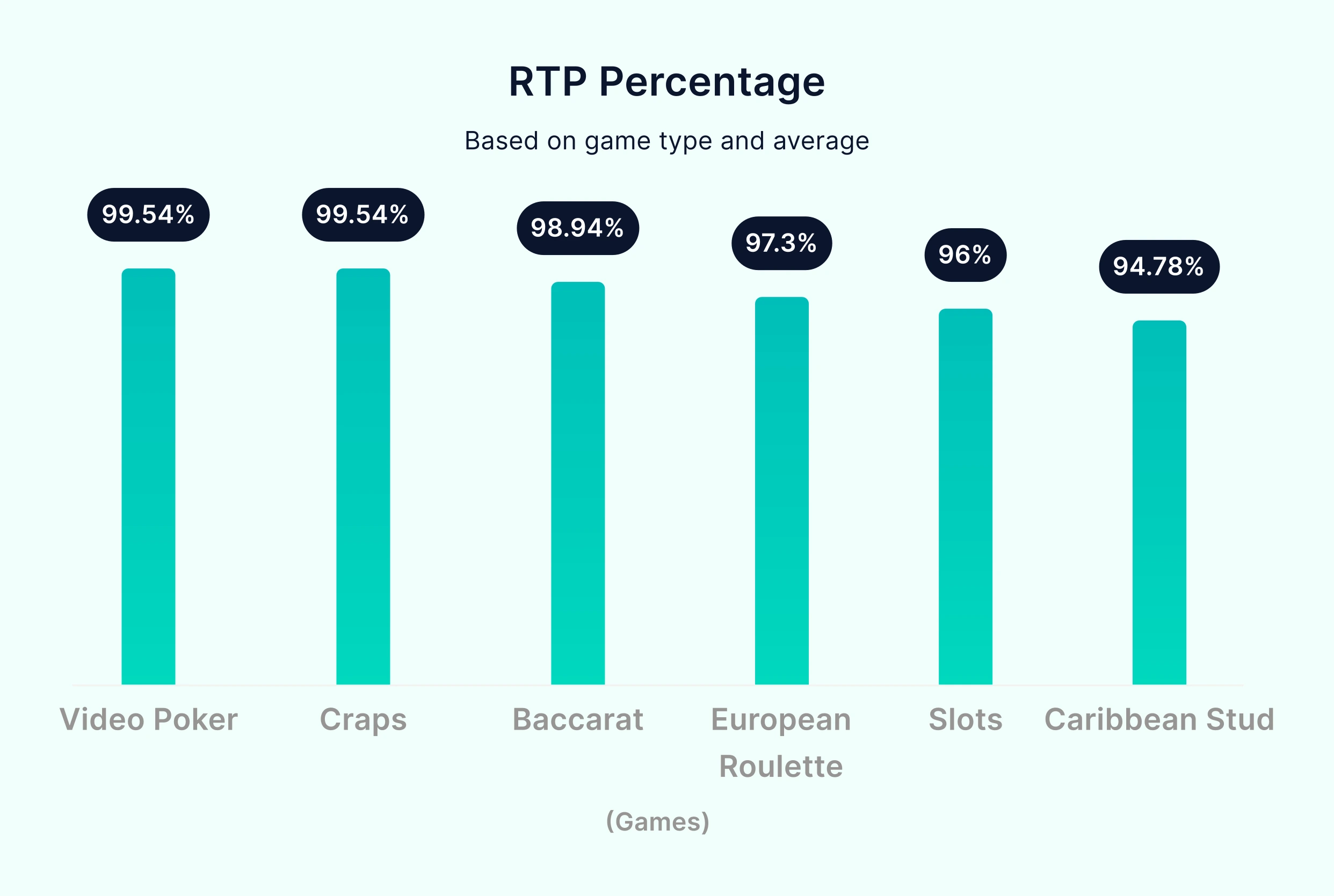
Get The Edge With Our Blackjack Strategies
Play smarter with basic strategy tips from our expert, Mr Blake.
FAQs
What are the odds of winning blackjack?
The base odds for winning blackjack are 42.22%. This probability can change depending on the variant of blackjack you are playing or house rules, such as whether the dealer hits or stands on soft 17. Always check the rules before playing.
What are the odds if you play perfectly?
If you play blackjack perfectly, then the house edge for traditional games is 0.5%. This can change depending on the variant. With advanced techniques such as card counting, the odds can be reduced further. However, this is not an option for online blackjack.
Why does blackjack have the best odds?
Blackjack has the best odds partly due to its simplicity. You and the dealer are both trying to reach 21. So, when played with basic strategy, the only advantage the dealer has is that they play second, so can base their decisions on yours.
Is blackjack a skill or luck?
The correct answer to this question is both. When playing blackjack, you rely, to an extent, on the luck of the draw. However, with basic strategy, as well as more advanced card counting techniques, you can skew the blackjack odds more in your favor.
What is the payout in blackjack?
The best blackjack payout is usually 3:2 for landing blackjack. However, some casinos payout 6:5 or even-money for blackjack. This reduces the probability of winning blackjack considerably. Always check the blackjack payout before playing at a table.
How can you memorize blackjack payouts?
Practice makes perfect. However, if you’re playing at an online casino, the payouts will always be accessible so you don’t have to memorize them at all. When first playing online blackjack, it’s sensible to check these regularly.
What are the bust cards in blackjack?
Bust cards are between 2 and 6, as they statistically make you most likely to bust. You should stand in most cases when you have a higher value hand because the chances of busting on a hit go up.
Who has the edge in blackjack?
Regardless of the game, the casino always has the edge. That’s how they make their money. However, at 0.5% at best, blackjack does have one of the lowest house edges of any casino game in either land-based or online casinos.
How do you calculate house advantage?
You calculate house advantage by taking the RTP away from 100%. In the case of blackjack, the RTP is 99.5%, leaving 0.5%. However, these odds are calculated over millions of hypothetical plays and should not be considered a guarantee of results.
Where is the best place to practice blackjack online?
We offer free casino games, including blackjack, on our site. Many online casinos, meanwhile, let you try out blackjack games for free. Check our list of the best online casinos to find the best site to play free blackjack before spending real money.
Where is the best place to play blackjack online for money?
We review countless sites to find the best real-money online casinos. That saves you the time it takes to research them all so you can get straight to the fun bit. Just pick your favorite from our list and start playing blackjack for real money.
We Help You Play Online Safely
Casino.us is an independent and impartial authority in gambling. For 20 years we’ve committed to finding players the best online casinos. Today more than 1,200,000 players worldwide trust our reviews process to help them play safely online.


